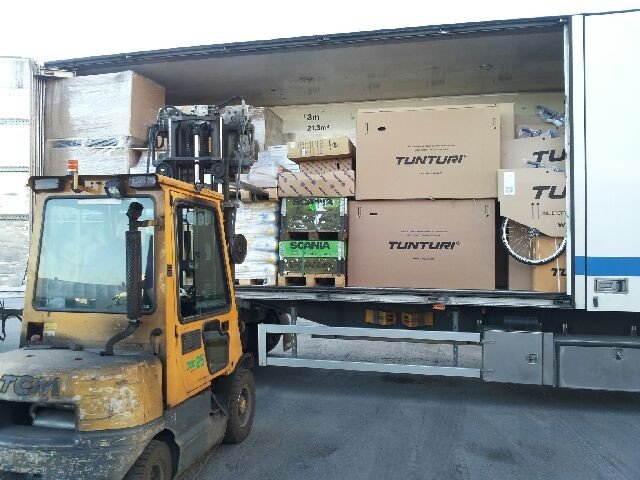Efficiency and simplification are paramount in the complex world of logistics and shipping. Freight All Kinds (FAK) stands out as a game-changing concept among the various strategies employed to streamline operations. This comprehensive guide delves into the intricacies of FAK, exploring its definition, history, applications, and impact on the shipping industry.
What is Freight All Kinds (FAK)?
Freight All Kinds (FAK) allows shippers to combine different types of goods into one shipment, classifying them under a single freight rate. Rather than handling multiple tariffs for each product category, FAK simplifies the process by using one flat rate for all goods shipped, regardless of their class. This makes FAK an efficient and cost-effective option for businesses that ship a wide variety of products.
What are the Benefits of FAK?
Implementing FAK into your shipping strategy can deliver several benefits to your business:
- Simplified Pricing: FAK eliminates the need for separate shipping rates for each type of commodity. By combining goods into one rate, it reduces the complexity of tariff calculations and saves administrative time.
- Administrative Efficiency: Shipping under one rate means fewer invoices and less paperwork, enabling your team to focus on other critical aspects of logistics.
- Flexibility: Businesses can consolidate various commodities into a single shipment, which allows for more efficient use of transportation and reduces the number of shipments needed.
- Cost Savings: FAK helps reduce overall freight costs by minimizing tariff complexity and making better use of shipping space. You can also negotiate better rates with carriers when shipping in bulk under one tariff.
- Predictable Budgeting: With a single rate in place, your business can forecast shipping costs more accurately, making it easier to stick to budgets and prevent unexpected cost overruns.
- Time Savings: The simplification of shipping classifications reduces the time spent calculating tariffs, preparing invoices, and coordinating shipments.
What is the FAK Rate of Freight?
The FAK rate refers to the flat rate pricing system used in shipping, where multiple types of goods can be shipped together under one price. This rate is typically negotiated between the shipper and the carrier, allowing different classes of freight to be combined into one shipment, simplifying the entire shipping process. The key advantage here is the consolidation of costs across various types of goods.
For example, if your business ships electronics, clothing, and furniture, instead of paying separate rates for each commodity, you’ll pay one flat rate for the entire shipment under FAK. This creates significant cost savings when managing diverse product lines.
What is FAK in Shipping?
FAK is widely used in the shipping and logistics industry to streamline operations. In Less Than Truckload (LTL) and Full Truckload (FTL) shipping, freight is typically classified based on the type of goods, their weight, and other factors. With FAK, businesses can avoid managing the complexity of handling multiple classifications by lumping all goods under one freight class, reducing operational friction.
By allowing businesses to group shipments that would otherwise require separate rates, FAK improves transportation efficiency and reduces the administrative burden on both shippers and carriers.
FAK vs Spot Rates: What’s the Difference?
FAK and spot rates differ in how they are applied. FAK provides a flat rate across various types of goods within an agreed shipment, which allows businesses to plan and budget more effectively. In contrast, spot rates fluctuate based on market conditions, such as demand, fuel prices, and carrier availability. Spot rates may offer more flexibility for occasional shippers, but businesses that ship consistently benefit more from the stable and predictable pricing of FAK.
Spot rates can be advantageous when shipping needs are irregular or when market conditions temporarily lower shipping prices. However, for businesses that frequently ship diverse goods, FAK offers a better solution to streamline logistics and reduce overall costs.
Difference Between FAK and NAC Rates
FAK is often compared to NAC (Negotiated Accessorial Charge) rates. NAC rates refer to customized, negotiable charges for special handling or additional services that are not included in base shipping rates. While NAC rates are specific to certain shipping needs, FAK consolidates all goods under one classification, covering a broader range of commodities at a consistent rate.
Businesses with special requirements (e.g., hazardous materials, refrigerated goods) may use NAC rates for extra services. However, FAK remains the more cost-effective option for standard, diverse shipments.
The History and Evolution of FAK
To fully appreciate the role of FAK in modern shipping, it's essential to understand its historical context and evolution.
Origins of Freight Classification
The concept of freight classification dates back to the early days of commercial shipping and railroads. In the 19th century, as railroads became the dominant mode of long-distance freight transportation in many countries, there was a need to standardize pricing for different types of goods.
The National Motor Freight Classification (NMFC) system, established in the United States in the 1930s, was one of the first comprehensive attempts to classify freight based on its characteristics. This system assigned class ratings to commodities based on four factors: density, stowability, handling, and liability.
The Need for Simplification
As global trade expanded and supply chains became more complex in the latter half of the 20th century, the traditional classification systems began to show their limitations:
- Complexity: With thousands of different classifications, the system was often confusing and time-consuming for shippers.
- Inconsistency: Different carriers might classify the same goods differently, leading to pricing discrepancies.
- Inefficiency: The detailed classification process could slow down shipping operations.
- Cost Fluctuations: Shippers dealing with a variety of goods faced unpredictable shipping costs due to varying classifications.
The Emergence of FAK
The concept of Freight All Kinds emerged as a response to these challenges. While it's difficult to pinpoint an exact date for the introduction of FAK, it gained significant traction in the 1980s and 1990s as the logistics industry sought ways to streamline operations and pricing.
FAK offered a solution by allowing carriers to group various commodities under a single classification, simplifying the pricing process and providing more predictable costs for shippers.
Modern Evolution
In recent years, FAK has continued to evolve:
- Technology Integration: The rise of digital logistics platforms has made it easier to implement and manage FAK rates.
- Customization: Carriers now offer more tailored FAK agreements to meet the specific needs of different shippers and industries.
- Global Adoption: While FAK originated in the context of domestic shipping, it has been adapted for use in international freight as well.
- Hybrid Models: Some carriers now offer hybrid systems that combine elements of traditional classification with FAK for certain types of shipments.
How FAK Works in Practice
Understanding the practical application of FAK is crucial for both shippers and carriers. Let's explore how FAK operates in real-world shipping scenarios.
The Basic Mechanism
- Rate Negotiation: The process typically begins with negotiations between a shipper and a carrier. They agree on a set FAK rate that will apply to a specified range of freight classes.
- Class Range Definition: The FAK agreement defines which freight classes will be covered. For example, an FAK rate might apply to all goods falling between class 50 and class 125.
- Weight Brackets: FAK rates often include different pricing tiers based on shipment weight. For instance, there might be one rate for shipments between 500-1000 lbs, another for 1001-2000 lbs, and so on.
- Uniform Pricing: Once the FAK agreement is in place, all shipments falling within the specified class range and weight brackets are charged at the agreed-upon rate, regardless of their actual NMFC class.
An Example Scenario
Let's consider a hypothetical example to illustrate how FAK works:
A company ships a variety of products, including electronics (class 85), clothing (class 100), and office supplies (class 70). Without FAK, each shipment would be priced according to its specific class rating.
With an FAK agreement in place:
- The carrier and shipper agree on an FAK rate of $15 per hundredweight (cwt) for all goods between class 50 and class 100, for shipments weighing 500-1000 lbs.
- Now, whether the company is shipping electronics, clothing, or office supplies, as long as the shipment weighs between 500-1000 lbs, it will be charged at $15 per cwt.
This simplifies pricing and allows the company to predict shipping costs more accurately across its product range.
Variations and Customizations
While the basic concept of FAK is straightforward, there are various ways it can be customized:
- Multiple FAK Levels: Some agreements include different FAK rates for different class ranges. For example, one rate for classes 50-85, another for classes 86-125, and so on.
- Exclusions: Certain high-value or hazardous materials may be excluded from FAK rates and priced separately.
- Seasonal Adjustments: FAK rates might be adjusted during peak shipping seasons or for specific promotional periods.
- Origin-Destination Pairs: Some FAK agreements specify different rates based on the origin and destination of shipments.
- Volume-Based FAK: Rates may be tiered based on the shipper's overall volume, with better rates offered for higher shipping volumes.
Understanding these variations allows shippers and carriers to create FAK agreements that best suit their specific needs and circumstances.
Conclusion: Choose mbmlog for Your FAK Shipping Needs
As global trade continues to expand and supply chains grow increasingly complex, efficient and simplified shipping strategies become ever more crucial. Understanding and leveraging advanced freight classification and pricing methods like FAK can bring significant advantages to your business. However, to fully capitalize on the benefits of FAK, choosing an experienced and trustworthy logistics partner is essential.
This is where mbmlog stands out. As a leading provider of logistics services, we not only have a deep understanding of FAK mechanisms but also possess extensive practical experience and the ability to customize solutions. Whether you're looking for a simplified pricing structure or need a tailored FAK solution for specific types of goods, mbmlog can create the optimal solution for you.
Choosing mbmlog means choosing:
- Professional FAK agreement customization
- Transparent and predictable freight costs
- Efficient and simplified shipping processes
- Flexibility to handle various types of goods
- Consistently high-quality service
Don't let complex freight classifications and unpredictable costs hinder your business growth. Contact mbmlog today and let our FAK experts show you how intelligent shipping strategies can enhance your logistics efficiency and cost control. Partner with mbmlog to simplify your shipping experience and unlock your business potential!






